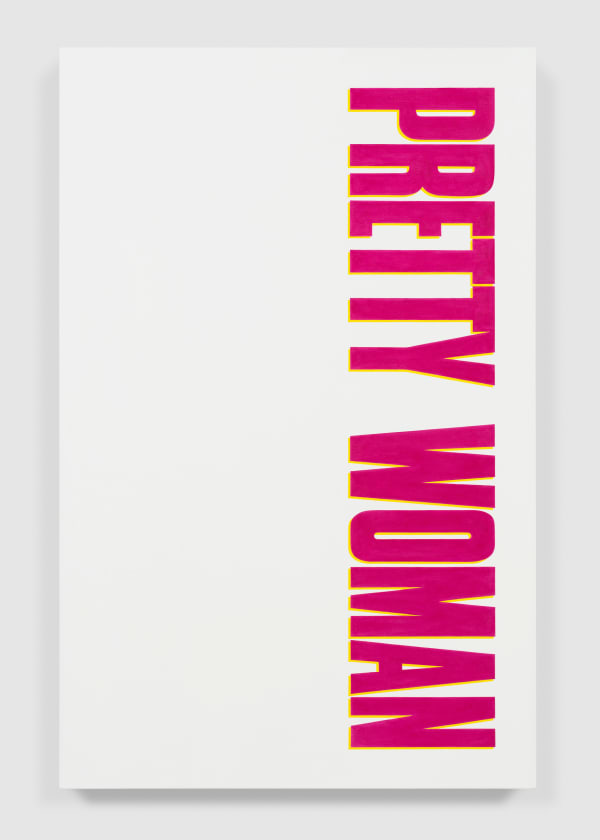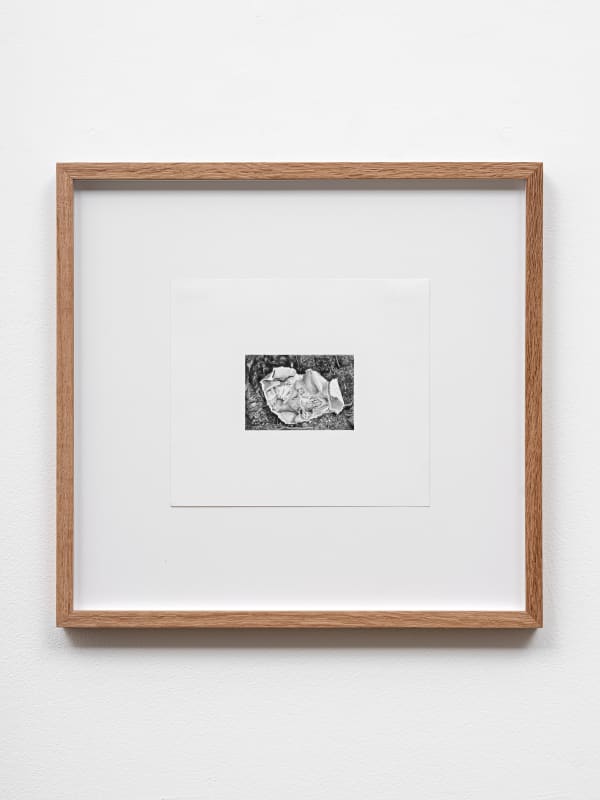"Myth of the Cherry Tree"
STANDARD (OSLO)
PRESS RELEASE
-----
CORY ARCANGEL / NINA BEIER / MATHEW CERLETTY / JINBIN CHEN / ISABELLA DUCROT / GÖZDE İLKIN / CECILIA JIMÉNEZ OJEDA / PETER OPSVIK / HANNAH RYGGEN / TORBJØRN RØDLAND / BEN SAKOGUCHI / NOLAN SIMON / SABLE ELYSE SMITH
"MYTH OF THE CHERRY TREE"
ORGANIZED BY MARY GRACE WRIGHT
21.04.-27.05.2023
-----
"Legends never die."
Babe Ruth, The Sandlot, 1993
George Washington never chopped down a cherry tree and then virtuously confessed to it. As was repeated to generations of American school children. This tall tale of honesty was entirely fabricated by a biographer to solidify the first U.S. President's place on the pedestal of history, and to sell books. Biographies and ghost-written autobiographies are full of inflated epics and quips, posturing to be seen and remembered as the best versions of oneself. A similar attention to portrayal exists in everyday life through how we chose to present ourselves and the characterizations others apply to us. We hold in ourselves assorted identities, often reduced by labels. Some celebrated and openly shared, some designated upon us at birth or after personal accomplishments or traumatic incidents. Others we hide forever buried in shame. The works in this exhibition share an acknowledgment and deep understanding that humans are full of multitudes.
Mathew Cerletty's "Pretty Woman" provides the exhibition's introduction on a light, magenta-hued, note with citation to the 1990 classic rom-com starring Richard Gere and Julia Roberts. Originally titled "3,000", the number refers to the US dollar amount that sex worker Vivian would earn for a week of companionship to a wealthy businessman. The sum is suggested to finance a drug addiction, with the original script's dark ending all but lost to a handful of articles and mentions in film blogs. Properly Disneyfied, this narrative was replaced with the sexist trope of her transformation from whore to Madonna through money and table manners. Arguably an even more sinister plot for impressionable young minds. Cerletty's painting presents the film's recognizable VHS cover solely with the block text. Void of any figuration, the work's overall meaning leaves the language open to interpretation and sets the tone for the rest of the room.
The molding of the perfect woman is mimicked across the tiled floor in Nolan Simon's "First Communion". Writ in reverse, Simon references the Greek myth of Pygmalion- a man who sculpted a woman so beautiful he asked the Gods to bring her to life for his own sexual pleasure. The headless figure, coated in what appears to be a clay or concrete substance, embraces an armless Venus in stone, apropos to how we change ourselves and our bodies to fit the idealized and unrealistic standards of beauty. Or perhaps she is caught mid-transformation, turning to stone after an encounter with the head of Medusa and her Gorgon sister swirling the floor in their red Ferraris. Nina Beier's kinetic "Automobile" sculpture assumes attention with its choreographed movement and tire screeching sound. The toy version trophy cars are stuffed with wigs made of hair imported from Asia, part bleached, treated and dyed for Western preference. These ambiguous portraits conjure immediate judgement of who sits behind the wheel of such a vehicle. The choice of a luxury car, an undeniable status emblem, questions how material possessions are used in an effort to supplement individualities, mask insecurities or skew perception.
Outward appearances are nowhere more important than for Britain's royal family. We see Ben Sakoguchi's dry, witty vignettes of historical moments whose understanding and importance changes with revelations of character. Sakoguchi's two eerily prescient compositions of the British royal family depict the recently deceased monarch's two sons. "Someday My Prince Brand" illustrates a wedding portrait of the now disgraced Prince Andrew and his ex-wife Sarah "Fergie", Duchess of York (who herself was sadly not invited to the coronation of Charles next month but is keeping up dignified appearances of support nevertheless). Next door, the imminent king himself is kissing the much beloved Princess Diana, but we all know it is Camilla who will take place next to him on the throne. The cheeky "Happily Ever After", another fairytale platitude hammered into our heads, is a hard learned farce. How the mighty have fallen, or at least their approval ratings, through shifting politics on colonialization, connections to Jeffery Epstein, the popularity of Netflix's The Crown, "You're Wrong About" podcasts, and Megxit. Parked in the middle of these royal matrimonial interpretations is a reminder that not only we, but the universe as a whole, is destined to come to an end. "As Time Goes By Brand" shows Stephen Hawking, and his second wife and former nurse, Elaine Mason. A marriage which courted controversy, it ended with Hawking leaving Mason for Diana King, his subsequent caretaker.
The most visually subtle work in the room comes from a photograph of Sable Elyse Smith titled "Young Thug [III.]". A young boy sports the American flag patterned clothing with an air of uncertainty to his demeanor. There is no particular indication of nefarious behavior, other than the more recent subjugation of the flag imagery by US right wing fanatics. But the title plants an identity in our minds and a pre-conceived notion. Language that could easily lend itself as an image caption in a news story - a condensed explication to slot in. It questions what the combination of one image and a simplistic word choice can do to reduce one's humanity - or downplay the extent of another's inhumanity. Think of obituaries brandishing "Ex-Con" and mugshots when a black man is murdered in the US opposed to a misleading, idealistic family portrait published when a white father of five murder-suicides his wife and children. The labels we assign to images, and by proxy to the people that populate them, build the representation of far more complex lives than the reductive narratives they create. The image of the young boy, no larger than a typical print from a 24-hour photo service, is framed within a passepartout, evoking a newspaper clipping in the manner of Sarah Charlesworth's "Modern History" series. The title and that one shot provide the entire story.
Death follows us directly to Torbjørn Rødland's photograph "Mayhem". The snow-covered gravestone is that of Øystein Aarseth aka Euronymous, who was an early figure in the Norwegian black metal scene, founder of Oslo's record shop Helvete, and one of the suspected arsonists in the wave of stave church burnings in the 1990s. Aarseth was brutally stabbed to death by his former Mayhem bandmate Varg Vikernes. A mentorship turned to rivalry, the reason behind the murder is still widely speculated, with questions of money, self-defense or Aarseth's rumored sexuality all raised as potential motives. Today's true crime mania would surely undercover a web of analysis. In the craze of speculating motives and killers, a victims' life can be overshadowed by their death and final moments, propelling dark tourism. After confrontation with mortality, we are immediately faced with a distorted view of ourselves in the reflection of Cory Arcangel's "♨~3.2023.005~2x1.2~Alu". The raw aluminum plate is stamped in the pattern of the unmistakable three stripes of Adidas tracksuits. The sportswear brand purports, much like any other fashion label, the ability to craft one's own unique image through the choice of their product despite its mass-produced nature. Arcangel's piece is fabricated in a Norwegian factory located in Nord Jæren inverting the manufacturing methods to create an individual artwork.
The plywood artworks of Peter Opsvik are an expression of the factions that make up the human brain. A composite mind map to our personalities and where emotion, logic and the inexplicable in-betweens converge. These portraits evoke a Tetris of identities working in harmony with or in competition to one another. Internally woven within us, these combinations of thought and feelings are unique and singular for each individual. Nevermore true than for Opsvik himself who beyond an artist is a jazz musician, and one of Scandinavia's most celebrated industrial designers of ergonomic furniture, well-known for the Tripp Trapp and Variable balans amongst others.
Another seemingly subtle bookend to the room- a graphite drawing by Cecilia Jiménez Ojeda of a stove top with frying egg either left unattended or being cooker by the viewer. A manufactured scene of a familial story revealing the harsh realities of poverty and an acknowledgment of how economical and geographical circumstances contribute to the development of political ideologies. The meticulous rendering and delicate attention to mundane objects or mise-en-scènes shows the care and empathy with which Ojeda approaches not just her works, but her complicated paternal relationships. This pattern continues to the courtyard space, through to her maternal relationship and her upbringing with five more drawings. These cathartic works are a refusal the capitulate to the normality of intergenerational trauma.
From the perspective of a mammalian parent, Jinbin Chen, "Lines of Cruising", was inspired by news of J35, the orca mother whose newborn calf died at birth. In a "tour of grief" or perhaps an instinctual attempt to save it, the whale carried her dead calf on her nose for two weeks, becoming an international news sensation. Chen's imagined map of the nautical routes of J35 also insinuate the trajectories of life's infinite possibilities through the breadth of choices facing us every day. The attention to line continues with Isabella Ducrot's "Tendernesses", where outlines of figures appear in a loving, deep embrace on delicate handmade Japan paper. Colored only for minimal differentiation with collage of a silver foil, these humans, or deities, blend in to one another under the crescent moonlight. From a series developed during the recent global pandemic, with its restriction on human contact, the motif has continued through Ducrot's loss of her long time partner. A life's end is an inevitable pain of existence, but a reminder to hold those close to us dearly. "Tendernesses" celebrates the intimacy with those dearest of ours and the joy of the physical familiarity we have with them. Ducrot's biographical information adds a layer of taboo, with a woman discussing sex as a nonagenarian. As youth passes, it does not mean desire fades or the need to express intimacy and love through physical contact- despite the antiquated view of women and age that persists.
Speaking of sexual relations, "La Côte Basque, 1965 / Still Life" is Nolan Simon's reinterpretation of a disrepute Pierre Bonnard still life, which was central to a scandalous indiscretion revealed in Truman Capote's 1975 essay also titled "La Côte Basque". Named after the tony establishment where Manhattan's elite wined and dined, Capote's text depicted thinly disguised characters from these very social circles, disclosing hugely private affairs of the upper crust. One such character is written in the likeness of William S. Paley, the broadcasting pioneer and husband of Capote's best friend, the socialite Barbara "Babe" Paley. He was also a noted patron of the arts, and his immense collection included exceptional pieces by the likes of Picasso, Matisse, Gauguin - and Bonnard. Quietly known around town for his extra-marital affairs, Capote exposed Paley's sordid one-night stand with the wife of a prominent governor, who by all accounts was of the waspy ilk. Paley invited the woman up to his apartment one evening after a chance meeting at a dinner party, under the pretense of viewing his recently acquired Bonnard. Bedding the Protestant governor's wife whilst his own spouse was out of town, Capote theorized that Paley, who was Jewish, had insecurities and resentment towards the New England, country-club gatekeepers that this woman so epitomized. He saw her seduction as some perverse act of revenge, but she had left him a parting surprise following their brief tryst. In Simon take on the Bonnard piece, the fruits appear more sumptuous, the colors brighter, as if embedded with the knowledge of their carnal past.
The sculptures of Gözde İlkin are embroidered archives tracing abstracted stories of characters, nature, and geographies that she collects both literally and figuratively. Embedded in the found fabrics are traditions and cultures, each with their own shifting stories of the land and landscape, manipulated over time ."How does the memory of nature stage the human memory, or how does the human memory stage the ways of remembering nature?" Prehistoric motifs and cave paintings inspired "Between the Earth and the Sky" with the first motifs of the world. The perceived mass of their stone shape, and the gravity of the history they hold, is balanced with their near weightless density. Deceptively light in mass, the surface of these pieces tells a lineage of stories that continuously shape our beliefs and experiences.
Last but not least, the imitable Hannah Ryggen's "Sisyphos" from 1966. Ryggen continues to inspire new fandom half a century after her passing by virtue of her radical incorporation of political statements through the handicraft medium of tapestry. This title refers to another Greek myth, addressing the eternal punishment for our actions deemed mistakes and the futility of labor - that which gives lends its name to the oft-used term "Sisyphean task". It is a reminder that our adult lives are never really fully resolved, endlessly pushing uphill. But it is our choice to be defined by our accomplishments, rather than celebrate the journey to get there.
-----
Cory Arcangel (b.1978, Buffalo, NY; Lives and works in Stavanger, Norway)
Nina Beier (b.1975, Aarhus, Denmark; Lives and works in Copenhagen, Denmark)
Mathew Cerletty (b.1989, Wauwatosa, WI; Lives and works in New York, USA)
Jinbin Chen (b.1994, Xiamen, China; Lives and works in Oslo, Noway)
Isabella Ducrot (b.1931, Naples, Italy; Lives and works in Rome, Italy)
Gözde İlkin (b.1981, Kütahya, Turkey; Lives and works in Istanbul, Turkey)
Cecilia Jiménez Ojeda (b.1982, Borås, Sweden; Lives and works in Oslo, Norway)
Peter Opsvik (b.1939, Stranda, Norway; Lives and works in Oslo, Norway)
Hannah Ryggen (b.1894, Målmo, Sweden, d.1970, Trondheim, Norway)
Torbjørn Rødland (b.1970, Stavanger, Norway; Lives and works in Los Angeles, USA)
Ben Sakoguchi (b.1938, San Bernardino, CA; Lives and works in Los Angeles, USA)
Nolan Simon (b.1980, Detroit, MI; Lives and works in Detroit, USA)
Sable Elyse Smith (b.1986, Los Angeles, CA; Lives and works in New York, USA)
-----






![Young Thug [III.]](https://artlogic-res.cloudinary.com/w_600,c_limit,f_auto,fl_lossy,q_auto/artlogicstorage/standardoslo/images/view/75cb837ee534bf73be73d429f5596e55j/standard-oslo-sable-elyse-smith-young-thug-iii.-2023.jpg)



















